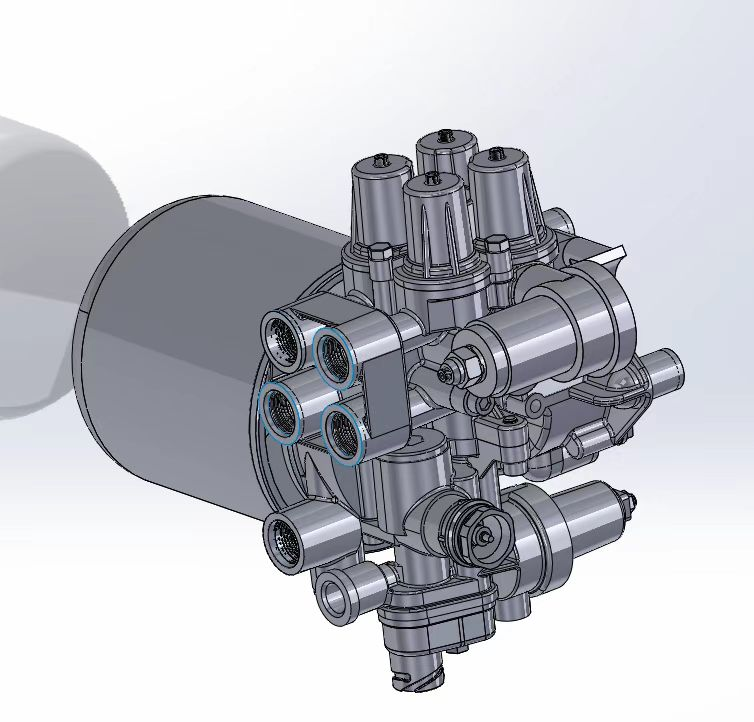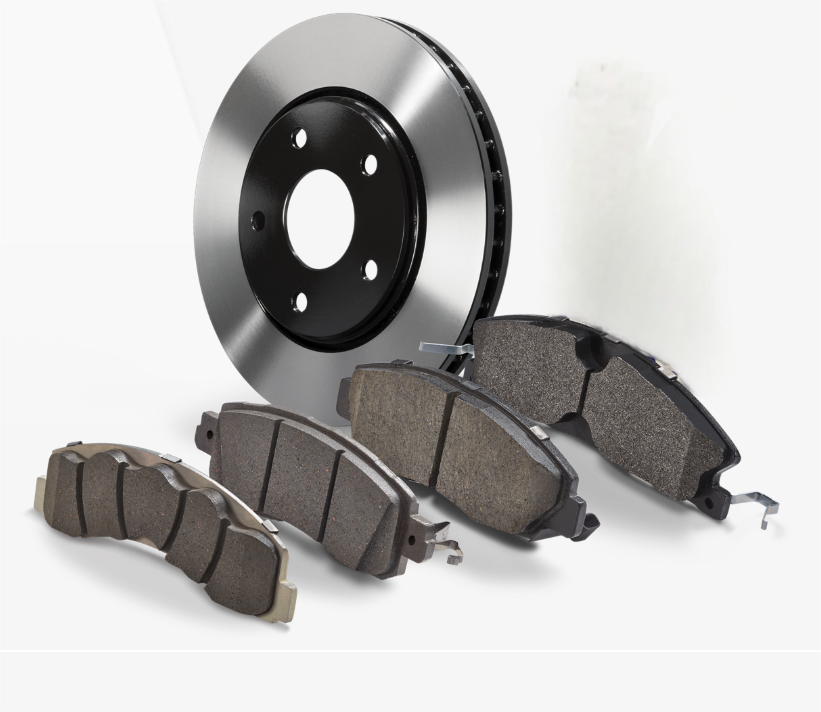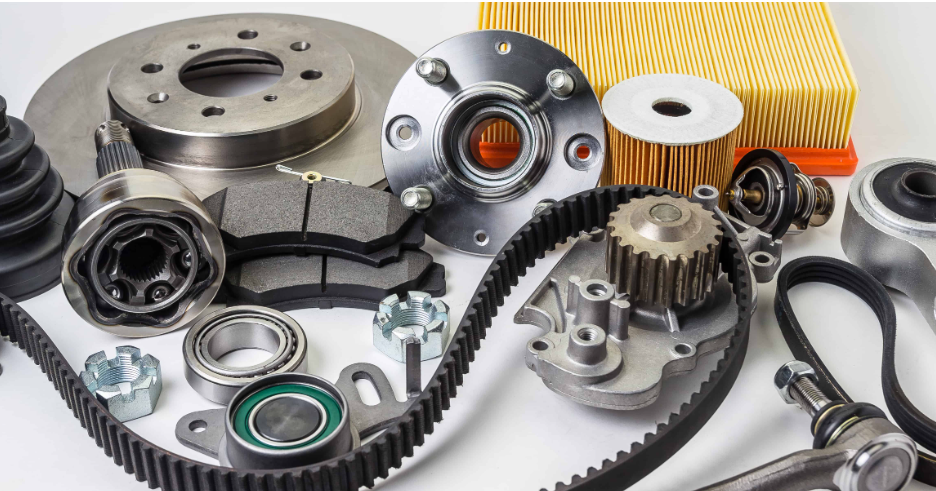How Low-Dust Brake Pads Work and What Sets Them Apart
What Exactly Are Low-Dust Brake Pads?
Brake pads that produce less dust are made with special friction materials meant to cut down on the amount of particles released when someone hits the brakes. Traditional semi metallic pads have between 30 to 65 percent metal fibers in them, and those metals tend to wear away and leave behind messy dust on wheels. The newer low dust options swap out most of that metal for things like ceramic mixtures or better quality organic stuff instead. What this means for drivers is significantly cleaner wheels after driving around town, probably somewhere around 70 percent cleaner than regular pads would be, without sacrificing how well they actually stop the car when needed.
Brake Pad Compounds and Their Characteristics
Brake pad performance hinges on four primary material types:
| Material | Dust Output | Noise Level | Rotor Wear | Ideal Use Case |
|---|---|---|---|---|
| Ceramic | Minimal | Quiet | Low | Daily driving, luxury |
| Semi-Metallic | High | Squeaky | Moderate | Heavy towing |
| Organic | Moderate | Silent | High | Urban commutes |
Ceramic formulations dominate the low-dust category due to their copper-infused ceramic fibers, which efficiently dissipate heat without generating excess debris.
Ceramic Brake Pads and Low Dust Production
Ceramic brake pads work their magic because they're made from tightly packed materials that actually stick together when pressed instead of breaking apart during friction. The special layering in these pads cuts down on metal touching metal by somewhere around 40 to 60 percent compared to those old school semi-metallic ones we used to see everywhere, which means way less dust floating around. Tests have shown that ceramic pads create just 0.2 grams worth of dust after doing 1,000 stops, which is pretty amazing since regular organic pads throw out almost twice that much grime. For people who care about keeping their cars looking clean while still getting reliable stopping power, this kind of engineering really hits the mark where it matters most.
The Impact of Brake Dust on Daily Driving and Vehicle Maintenance
Why brake dust is a problem (and how low dust pads fix it)
Brake dust builds up on wheels and suspension parts over time, which speeds up rust formation and cuts down on how much people want to pay when selling used cars. The bigger problem though is what happens when those tiny bits get into the air we breathe. Regular brake pads are responsible for between 16 to 55 percent of all PM2.5 pollution found in city areas according to EIT Urban Mobility research from 2025. These fine particles can really mess with lungs and breathing systems. New low-dust brake pads tackle this mess by incorporating special friction compounds that just don't produce as many harmful particles during normal driving conditions. And interestingly enough, electric vehicles with their regen braking tech actually emit around 83% less brake dust compared to traditional vehicles. This means cleaner air for everyone living in urban environments where traffic congestion remains a constant challenge.
Brake dust production by brake pad type
Metal pads tend to create the most brake dust around 2 to 4 grams after about a thousand stops because they contain iron compounds that oxidize over time. Semi metal options cut down on this mess by roughly 30 to 40 percent, but ceramic brakes take it even further. These ceramic discs mixed with copper fibers and clay actually produce up to 90% less visible dust than traditional types. What makes ceramics special is how their tiny particles don't stick as easily to wheel rims, which means regular folks spend less time cleaning up after braking sessions. Most car owners find this a huge plus when looking at long term maintenance costs.
Brake dust and its relation to pad wear
High-dust pads typically wear 25–40% faster than ceramic alternatives. Each millimeter of pad material lost produces approximately 150g of dust. Low-dust compounds maintain stable friction surfaces, extending service life to 50,000–70,000 miles compared to 30,000–40,000 miles for conventional pads, according to SAE wear rate analyses.
Performance and Comfort Benefits for Everyday Drivers
Daily driving brake pad performance with low-dust materials
According to the Brake Safety Council from 2023, low dust brake pads cut down on dust buildup somewhere between 60 to 80 percent when compared with those old school semi metallic ones. The new composite stuff works just as well for stopping power during regular driving situations, plus it stops that annoying gray black grime from getting all over shiny alloy wheels. When looking at aftermarket options made with ceramic or NAO compounds, they actually perform pretty close to factory specs too. Independent tests show these alternatives hit around 98 point five percent of original equipment manufacturer braking capability when roads are dry, which isn't bad considering most drivers won't notice much difference day to day.
Smooth braking response and reduced noise levels
The vibration-damping properties of ceramic composites enable near-silent operation. A 2022 study in Automotive NVH Journal found low-dust pads produced only 52 dB during braking at 30 mph—38% quieter than entry-level semi-metallic pads. This results in smoother pedal feel and reduced cabin noise, especially beneficial during stop-and-go commutes.
Longer rotor life due to gentler friction materials
| Pad Type | Average Rotor Wear (per 15k miles) |
|---|---|
| Ceramic | 0.008" |
| NAO | 0.012" |
| Semi-Metallic | 0.021" |
The Friction Materials Association (2024) attributes ceramic pads’ extended rotor life to their polished wear pattern, which creates microscopically smoother rotor surfaces. This gentler interaction can save drivers $180–$340 per axle over 75,000 miles in avoided rotor replacements.
Consistent performance in stop-and-go traffic
Ceramic formulations maintain stable friction coefficients (±5%) across the 200–500°F range typical in urban driving, per a 2023 Urban Traffic Study. This prevents brake fade—the loss of stopping power after repeated braking—and delivers 22% more consistent pedal feel in traffic jams compared to organic pads.
Ceramic Brake Pads: The Top Choice for Low Dust and Reliable Performance
Ceramic Brake Pads and Their Benefits Beyond Dust Reduction
Ceramic brake pads mix ceramic fibers with copper particles inside them, giving drivers benefits that go way beyond just producing less brake dust. These pads really cut down on annoying brake noise too, and they stop vehicles much smoother compared to other types. The material is so dense it actually protects rotors better over time, which means parts last longer before needing replacement. Some tests have measured as much as a 70 percent drop in brake dust when using ceramic pads instead of standard ones. Less dust means cleaner wheels between cleanings, something every driver appreciates during regular city commutes where stopping happens constantly throughout the day.
How Ceramic Compounds Minimize Metal-on-Metal Contact
The ceramic matrix forms a protective friction layer that buffers rotors from direct steel abrasion. Embedded copper fibers enhance thermal conductivity, preventing localized heat spikes that accelerate rotor wear. This gentler engagement helps rotors last 30–50% longer than those paired with conventional semi-metallic pads.
Thermal Stability and Fade Resistance in Urban Driving
Ceramic brake pads resist glazing at temperatures up to 650°F (343°C), maintaining consistent friction even during prolonged stop-and-go driving. This resistance to performance fade makes them particularly well-suited for congested city routes where frequent braking generates sustained heat.
Controversy Analysis: Are Ceramic Pads Too Soft for Aggressive Drivers?
Some people will tell us ceramic brake pads just don't have that aggressive stopping power many performance enthusiasts love. But lately manufacturers have come up with better formulas that actually work pretty well for most folks who want both good response when braking and pads that last longer than others. If someone regularly hauls heavy loads or drives through mountains where temperatures get really hot under the hood, then semi metallic options might make more sense because they handle extreme heat better. Still, the vast majority of regular drivers out there find ceramic pads to be much better overall. They leave fewer dust trails on wheels, create less noise during normal driving conditions, and ultimately save money over time since they need replacing less frequently compared to other types available today.
Long-Term Cost Efficiency and Maintenance Advantages
Reduced wheel cleaning frequency and associated savings
Low-dust brake pads reduce dust buildup by up to 90% compared to semi-metallic pads (Automotive Maintenance Association 2023). Most drivers switch from weekly to monthly wheel cleanings, saving about 4 hours and $120 annually in time and detailing costs.
Extended service intervals due to slower wear rates
Ceramic brake pads wear 50% slower than semi-metallic versions, lasting up to 70,000 miles under normal conditions (Friction Materials Council 2022). This durability lowers ownership costs over time:
| Pad Type | Average Lifespan | Replacement Cost (Per Axle) |
|---|---|---|
| Ceramic | 70,000 miles | $300 |
| Semi-Metallic | 45,000 miles | $250 |
Over 100,000 miles, drivers save $200–$500 due to fewer replacements.
Brake pad maintenance for daily drivers
Low-dust formulations reduce rotor scoring and corrosion, leading to simpler upkeep:
| Maintenance Task | Traditional Pads | Low-Dust Pads |
|---|---|---|
| Rotor resurfacing frequency | Every 2 years | Every 4 years |
| Brake fluid flush interval | 30,000 miles | 45,000 miles |
| Inspection cadence | Biannual | Annual |
This reduced maintenance burden aligns with manufacturer-recommended service schedules, enhancing convenience and lowering long-term costs.
FAQ Section
What are low-dust brake pads?
Low-dust brake pads are designed with special friction materials like ceramics or high-quality organics to reduce the amount of dust produced during braking, keeping the wheels cleaner.
How do ceramic brake pads reduce dust?
Ceramic brake pads use materials that stick together under pressure, reducing metal-on-metal contact, which significantly lowers dust production compared to traditional brake pads.
Are ceramic brake pads good for daily driving?
Yes, ceramic brake pads are excellent for daily driving as they provide reliable stopping power, low noise, and longer rotor life, making them a cost-effective option for most drivers.
Do low-dust brake pads wear out faster?
No, low-dust brake pads, especially ceramic ones, typically wear out slower than traditional pads, lasting up to 70,000 miles under normal conditions.
Can low-dust brake pads affect air quality?
Yes, by producing fewer harmful particles, low-dust brake pads help improve air quality, especially in urban environments where brake dust contributes significantly to air pollution.
Table of Contents
- How Low-Dust Brake Pads Work and What Sets Them Apart
- The Impact of Brake Dust on Daily Driving and Vehicle Maintenance
- Performance and Comfort Benefits for Everyday Drivers
- Ceramic Brake Pads: The Top Choice for Low Dust and Reliable Performance
- Long-Term Cost Efficiency and Maintenance Advantages
- FAQ Section







